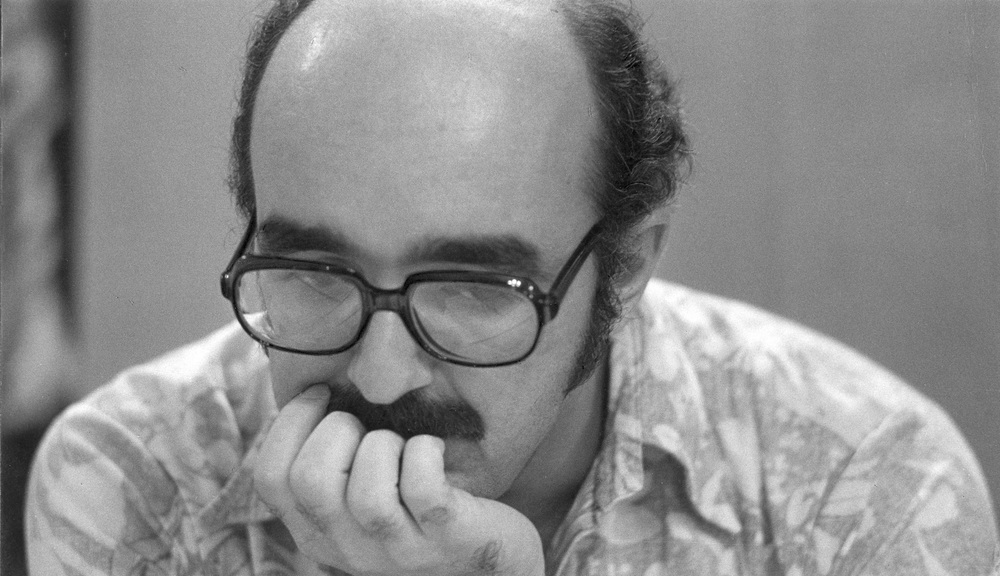

|
Jerré Tanner (b. 1939 - ) is a composer of symphonies and operas, music critic, teacher, author and long-time resident of Hawaii. He studied orchestration with Pulitzer Prize recipient Wayne Peterson at San Francisco State University where he earned an MA degree in composition. His compositions have been recorded by the London Symphony Orchestra, the Prague Chamber Orchestra, Polish Radio and Television Symphony Orchestra, Slovak Radio Symphony Orchestra and released on the Albany and Vienna Modern Masters labels. He has received awards and grants from ASCAP, Hawaii State Foundation on Culture and the Arts, National Association of American Composers and Conductors, National and Hawaii Bicentennial Commissions, Huntington Hartford Foundation in Los Angeles, Meet-the-Composer, and two Margaret Fairbank Jory Copying Assistance grants administered by the American Music Center. In 1997 the State of Hawaii awarded him the Artist Fellowship in Music Composition. In 1999 and 2001 he received commissions through the American Composers Forum “Continental Harmony” program for composer-in-residence in New Mexico and North Carolina. The Honolulu Symphony has given the premiere of six of his works, and his orchestra, band, choral and solo vocal works have been performed from Shanghai to Krakow. He is listed in the New Grove Dictionary of Music, Who’s Who in America and is a member of the Iowa and American Composers Forums, a retired member of the Honolulu Symphony Chorus and the American Choral Directors Association Hawaii Chapter. His collected manuscripts and papers are housed in Special Collections at Rod Library, University of Northern Iowa, Cedar Falls, Iowa. |
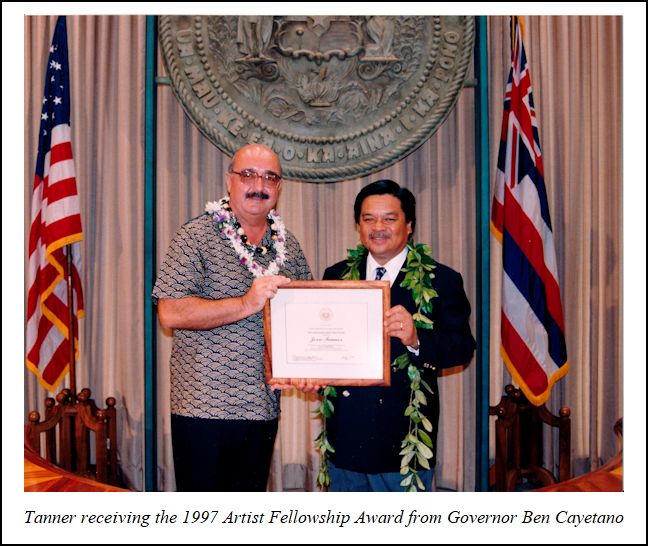 BD: Now the dangerous question. Is your music peculiarly
Hawaiian?
BD: Now the dangerous question. Is your music peculiarly
Hawaiian?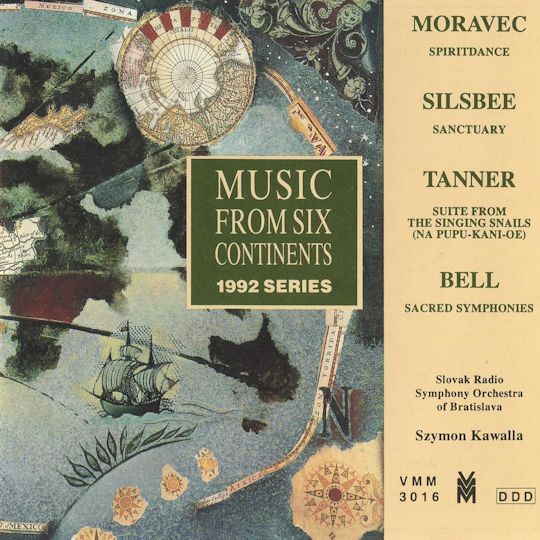 JT: Absolutely,
yes. If Hawaii were declared a monarchy tomorrow, we would have
a king, a queen, a prince, and several princesses. There’s a direct
line.
JT: Absolutely,
yes. If Hawaii were declared a monarchy tomorrow, we would have
a king, a queen, a prince, and several princesses. There’s a direct
line.Remember, this conversation
took place in May of 1993. As the interview is being prepared for
this website in September of 2018, the eruption of the Kilauea volcano
has been in the news, and after three and a half months shows signs of finally
easing off. Lava flows reached the ocean, caused evacuations, and
destroyed hundreds of homes. According to Forbes
online (posted August 17, 2018), the total volume of lava erupted since
May exceeds the total volume from three of the largest eruptive events in
the area over the past two centuries combined. The article went on
to say that it may be over, or it may just be a pause. I contacted
Tanner to ask him directly about this, and in an e-mail on September 10,
he re-assured me..."Much thanks for your concern. We are 250 miles northwest of Kilauea |
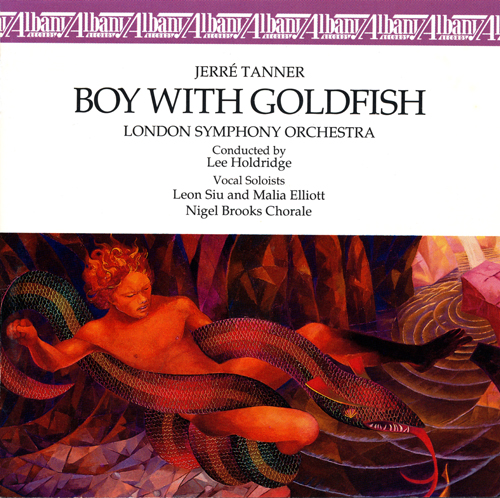 BD: So, you cut yourself off but then didn’t sever all
the ties?
BD: So, you cut yourself off but then didn’t sever all
the ties?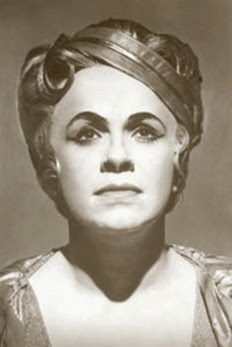
Irene Dalis (born Yvonne Patricia Dalis, October 8, 1925 – December 14, 2014) was an American mezzo-soprano, who had a long international career at the highest levels of world opera. In 1946 she received her bachelor's degree from San Jose State College (now San Jose State University), where she regarded herself not as a singer, but as a pianist. She was Brangäne when Birgit Nilsson sang her first Tristan und Isolde at the Met in 1959, Amneris when Leontyne Price debuted in Aïda there in 1961, and Princess di Bouillon for Plácido Domingo’s Met debut in Adriana Lecouvreur. In 1961, Dalis appeared as the first American to sing the role of Kundry in Parsifal at the Bayreuth Festival [seen in photo at right]. Her portrayal of this role was recorded in 1962 with Jess Thomas as Parsifal, Hans Hotter as Gurnemanz, and Hans Knappertsbusch conducting. This recording won the Grand Prix du Disc in 1964. In 1963 she was awarded the Richard Wagner Medallion in Bayreuth. In 1967 she sang Isolde for the first time (in San Francisco), with Jess Thomas also singing his first Tristan. After retiring from the Met in 1976, Dalis returned to her hometown in California, where San Jose State University offered her the position of Professor of Music. There she developed the Opera Workshop program, which began turning out so many career-level graduate singers that she decided to form the Opera San Jose in 1984, a professional company which hires young singers on a multi-year contract basis, allowing them to perform principal roles in the company's four annual productions. |
|
Henri Berger was born Heinrich August Wilhelm Berger in Prussia and became a member of Germany's imperial army band. He worked under the composer and royal bandmaster of Germany, Johann Strauss, Jr. Originally, Kaiser Wilhelm I of Germany loaned Berger from his Potsdam station to King Kamehameha V to conduct the king's band. He arrived in Honolulu in June 1872, fresh from service in the Franco-Prussian War. In 1877, King Kalākaua appointed Berger to full leadership of the Royal Hawaiian Band. In 1879, he became a naturalized citizen of the Kingdom of Hawaii. Berger befriended the future Queen Liliʻuokalani,
a composer in her own right. Berger arranged the songs she wrote, performed
by the brass band. The queen named Berger the "Father of Hawaiian Music".
From 1893 to 1903, the bandmaster worked with the Kamehameha Schools to
develop its music program. He also built what is today the Honolulu Symphony. 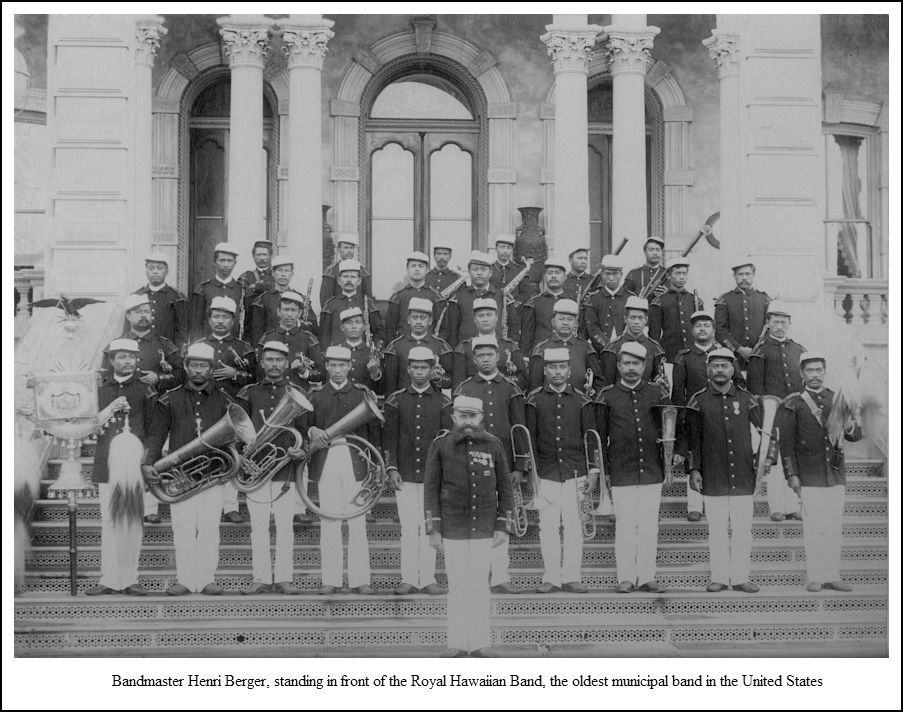
He led the government band at thousands of public events. Among these were "steamer day," when a ship left the Honolulu docks. The band serenaded the departees with "Auld Lang Syne," or "The Girl I Left Behind Me." Later in his tenure as royal bandmaster, Berger took it upon himself to record traditional Hawaiian hymns, chants and other Hawaiian music in print to ensure their survival, a task never done before. Berger at the same time composed the classics, "The Hula March", "Hilo March", "Kohala March" and "Sweet Lei Lehua." His arrangement of "Hawaiʻi Ponoʻī", with text by Kalākaua in honor of Kamehameha became the national anthem. Today, the song serves as the state anthem. Berger combined German, Austrian and Hawaiian traditions in his
unique compositions and performed with the Royal Hawaiian Band thousands
of times, making Hawaiian music known and popular in many countries. |
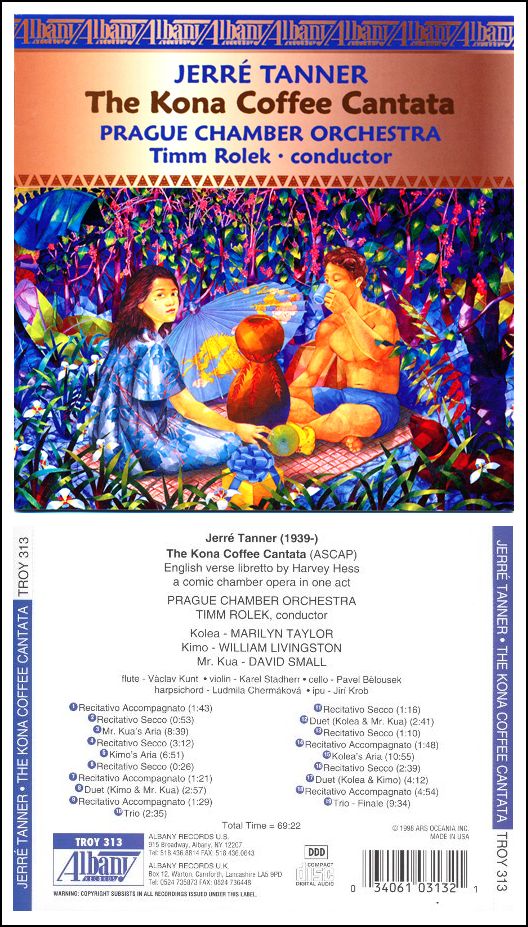 BD: He was in Dallas for a while? [This was from
1962-70.]
BD: He was in Dallas for a while? [This was from
1962-70.]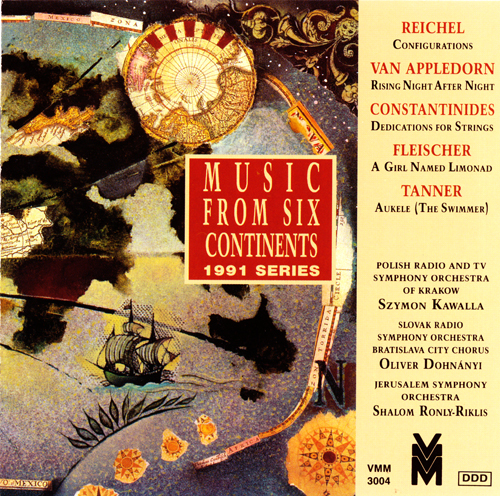 BD: In the electronic age, might people
make pilgrimages via their video cassette that they bought of your opera?
BD: In the electronic age, might people
make pilgrimages via their video cassette that they bought of your opera?© 1993 Bruce Duffie
This conversation was recorded in Chicago on May 20, 1993. Portions were broadcast on WNIB twice the following year, and again in 1999. This transcription was made in 2018, and posted on this website at that time. My thanks to British soprano Una Barry for her help in preparing this website presentation.
To see a full list (with links) of interviews which have been transcribed and posted on this website, click here.
Award - winning broadcaster Bruce Duffie was with WNIB, Classical 97 in Chicago from 1975 until its final moment as a classical station in February of 2001. His interviews have also appeared in various magazines and journals since 1980, and he now continues his broadcast series on WNUR-FM, as well as on Contemporary Classical Internet Radio.
You are invited to visit his website for more information about his work, including selected transcripts of other interviews, plus a full list of his guests. He would also like to call your attention to the photos and information about his grandfather, who was a pioneer in the automotive field more than a century ago. You may also send him E-Mail with comments, questions and suggestions.